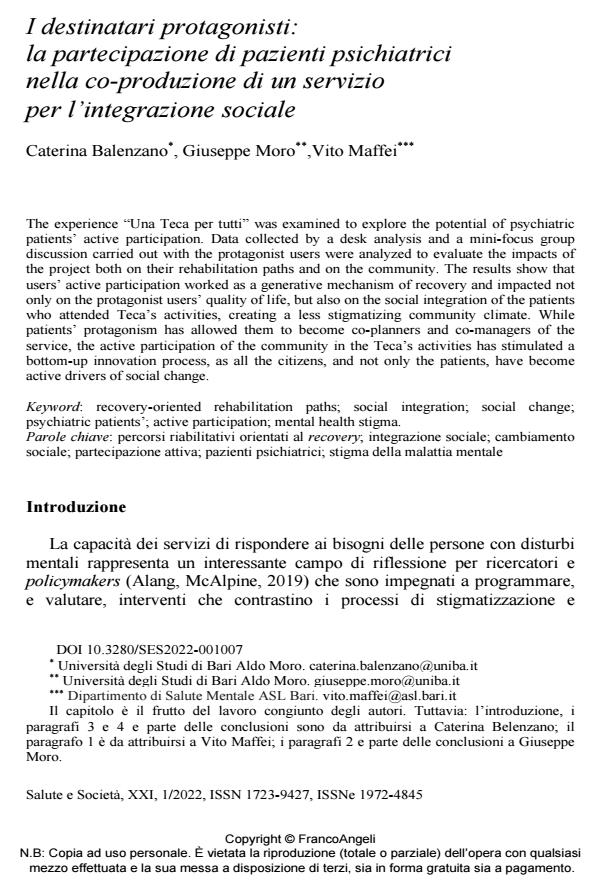I destinatari protagonisti: la partecipazione di pazienti psichiatrici nella co-produzione di un servizio per l’integrazione sociale
Journal title SALUTE E SOCIETÀ
Author/s Caterina Balenzano, Giuseppe Moro, Vito Maffei
Publishing Year 2022 Issue 2022/1
Language Italian Pages 16 P. 97-112 File size 231 KB
DOI 10.3280/SES2022-001007
DOI is like a bar code for intellectual property: to have more infomation
click here
Below, you can see the article first page
If you want to buy this article in PDF format, you can do it, following the instructions to buy download credits

FrancoAngeli is member of Publishers International Linking Association, Inc (PILA), a not-for-profit association which run the CrossRef service enabling links to and from online scholarly content.
The experience "Una Teca per tutti" was examined to explore the potential of psychiatric patients’ active participation. Data collected by a desk analysis and a mini-focus group discussion carried out with the protagonist users were analyzed to evaluate the impacts of the project both on their rehabilitation paths and on the community. The results show that users’ active participation worked as a generative mechanism of recovery and impacted not only on the protagonist users’ quality of life, but also on the social integration of the patients who attended Teca’s activities, creating a less stigmatizing community climate. While patients’ protagonism has allowed them to become co-planners and co-managers of the service, the active participation of the community in the Teca’s activities has stimulated a bottom-up innovation process, as all the citizens, and not only the patients, have become active drivers of social change.
Keywords: recovery-oriented rehabilitation paths; social integration; social change; psychiatric patients’; active participation; mental health stigma.
Caterina Balenzano, Giuseppe Moro, Vito Maffei, I destinatari protagonisti: la partecipazione di pazienti psichiatrici nella co-produzione di un servizio per l’integrazione sociale in "SALUTE E SOCIETÀ" 1/2022, pp 97-112, DOI: 10.3280/SES2022-001007